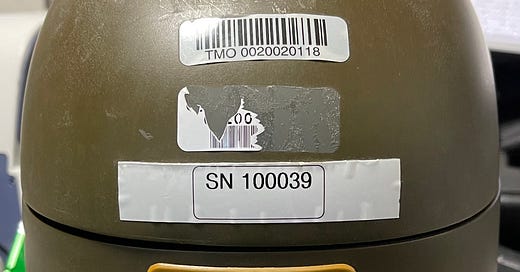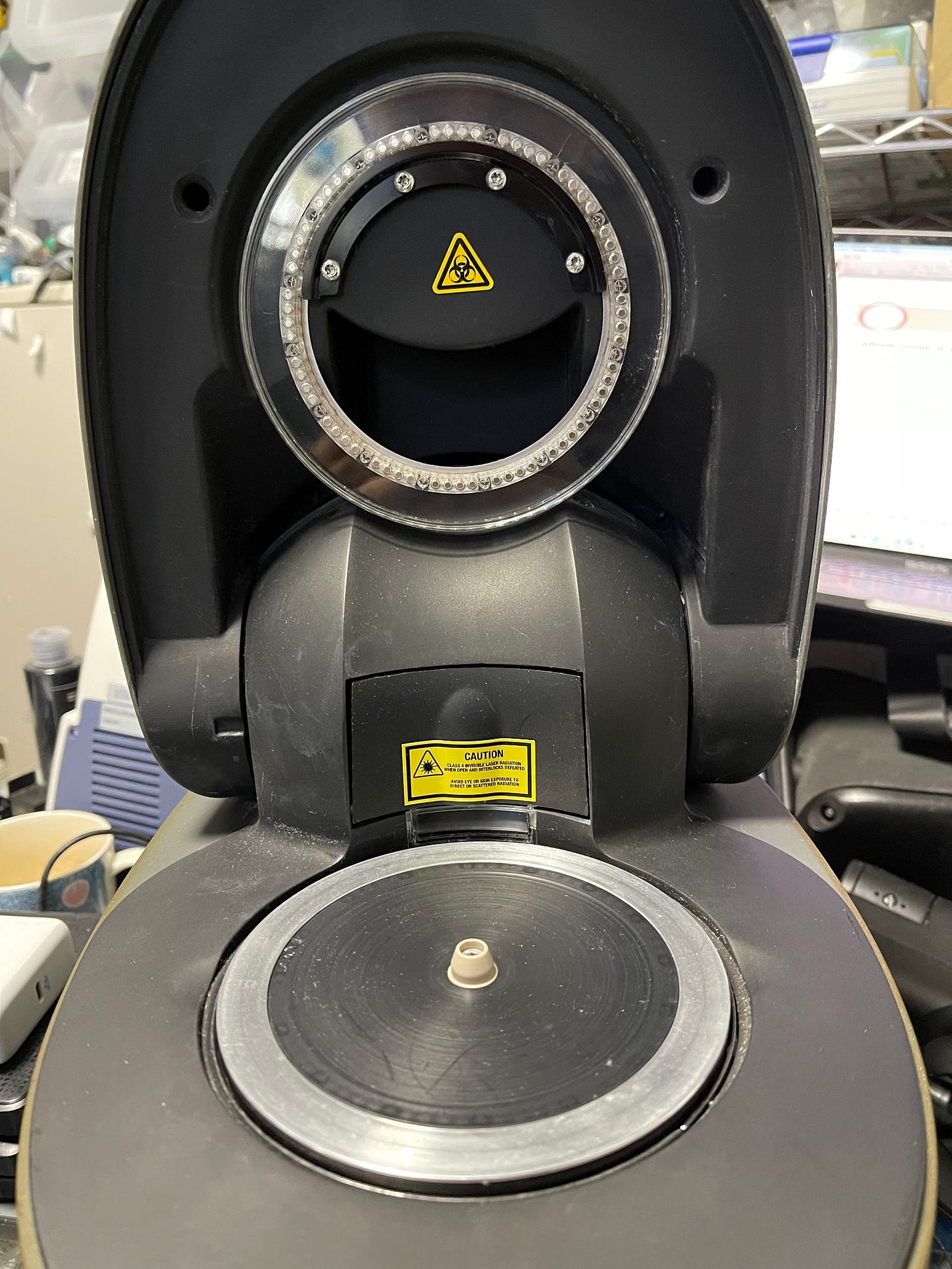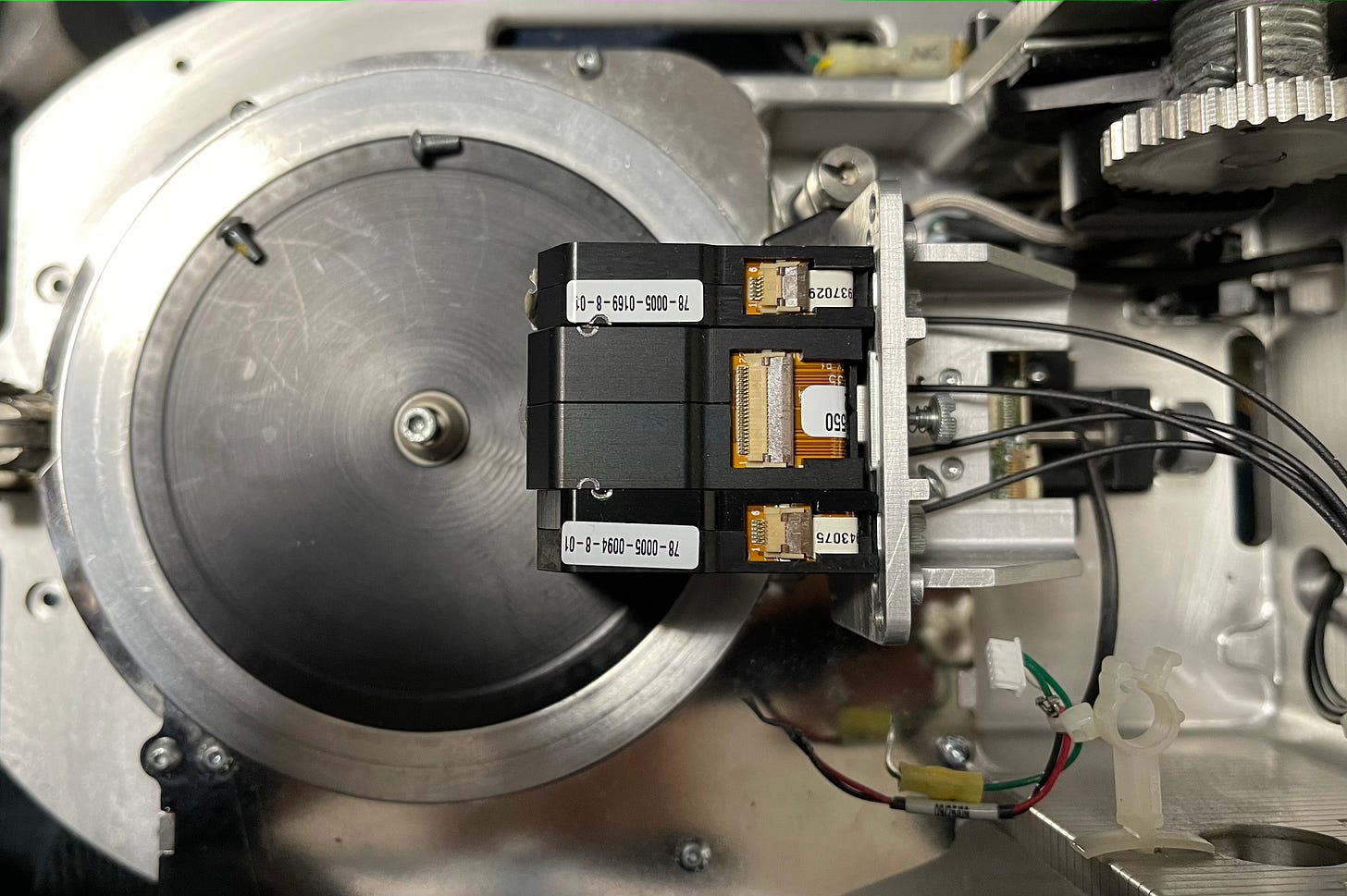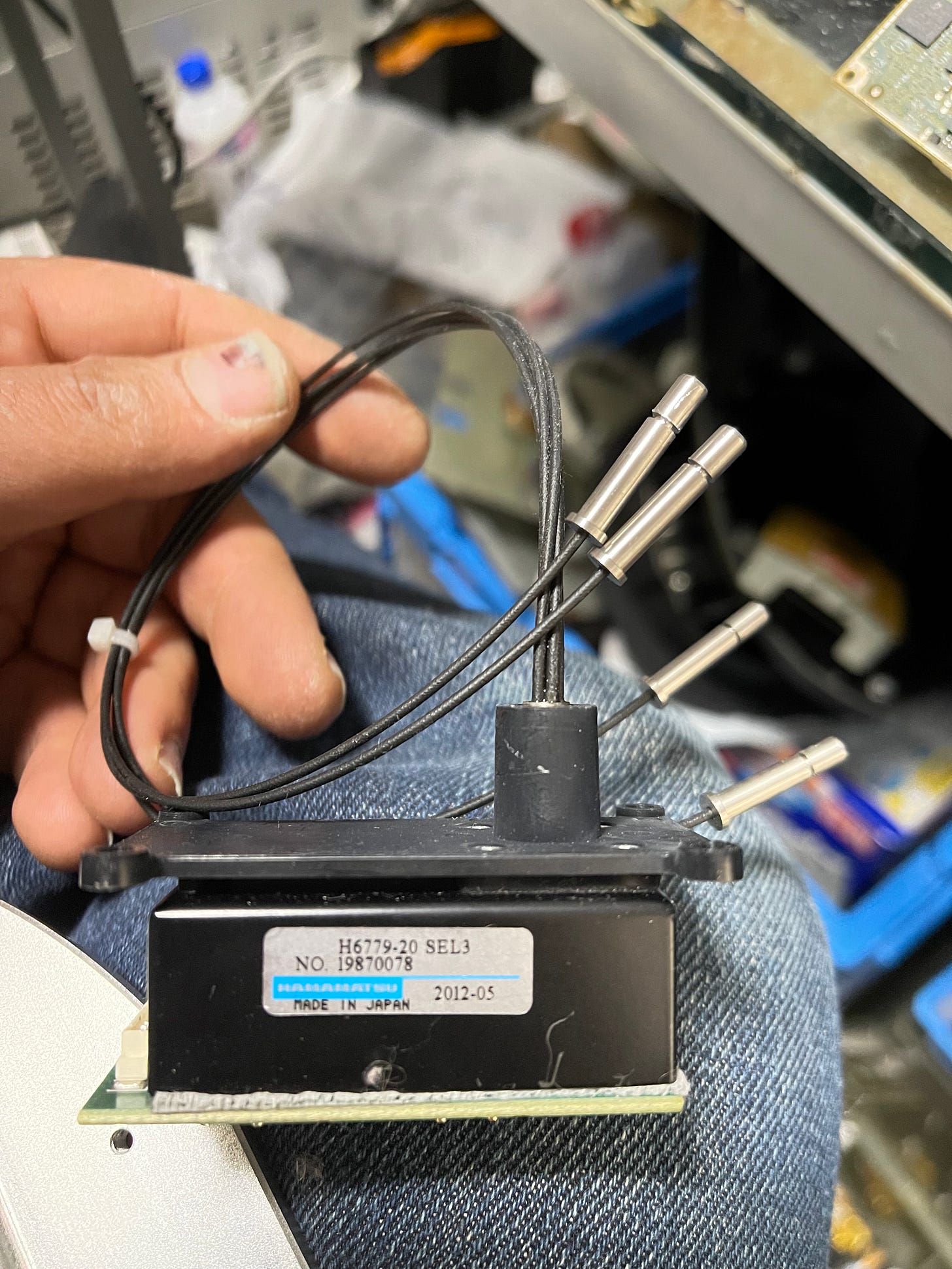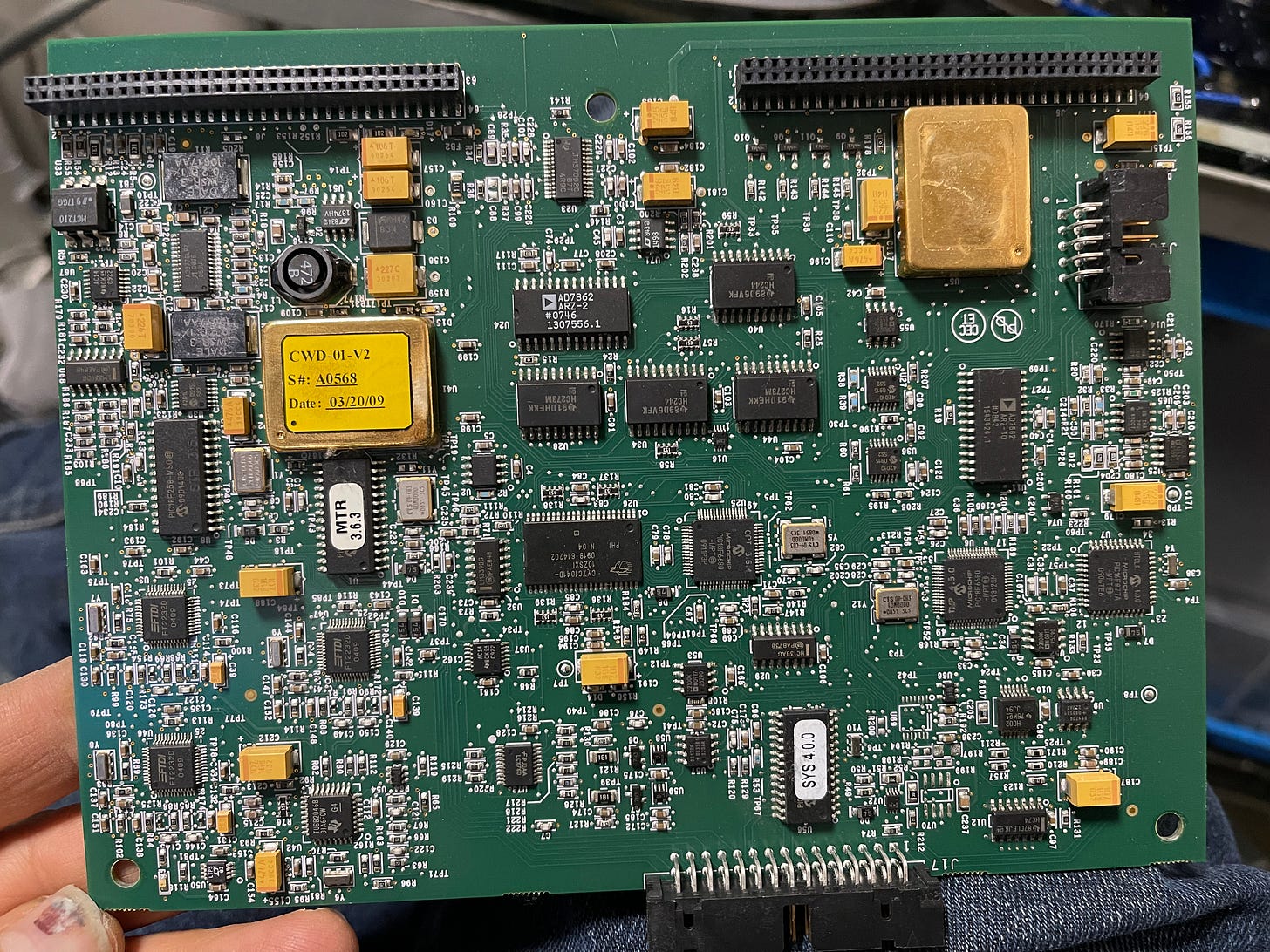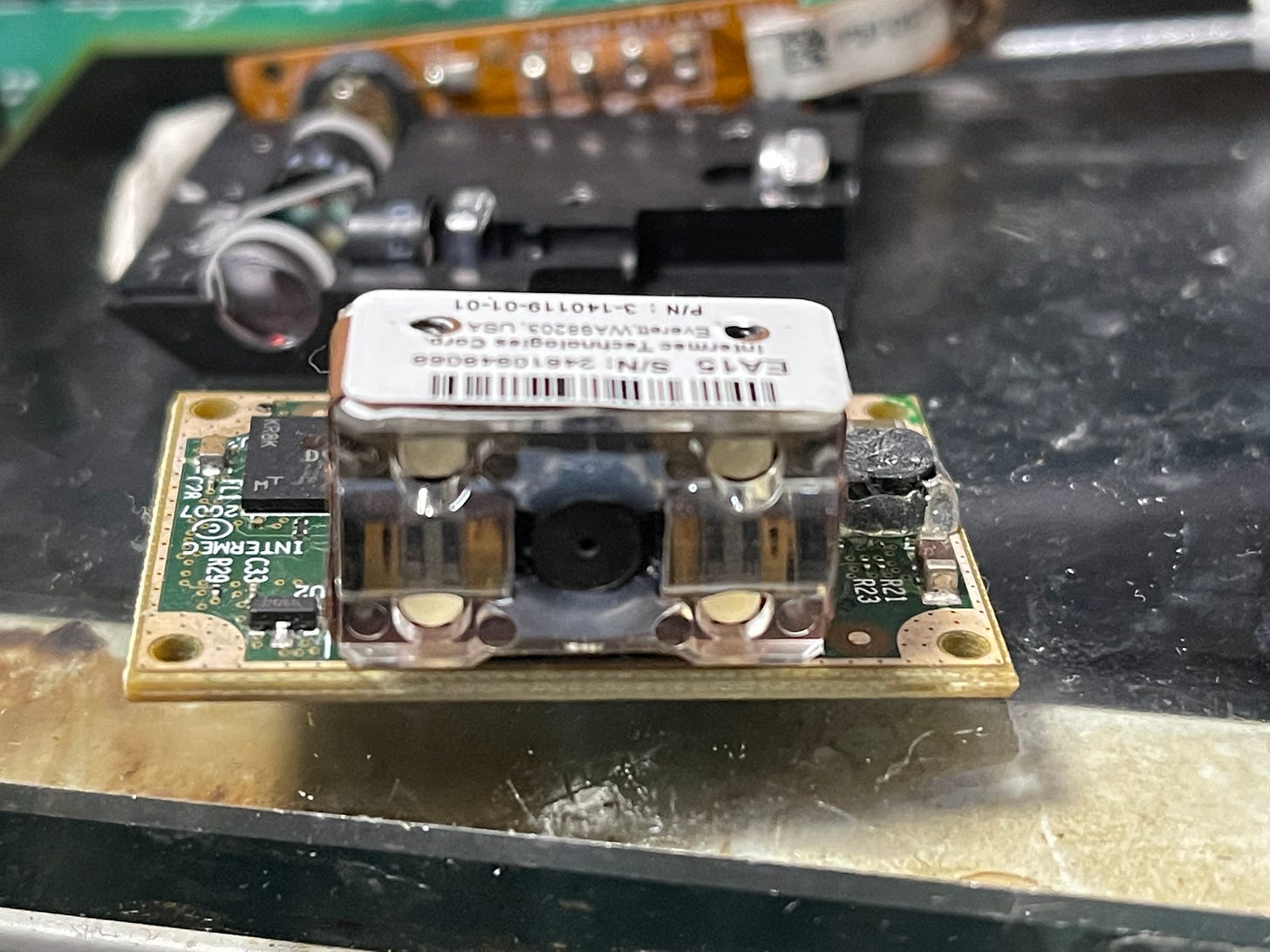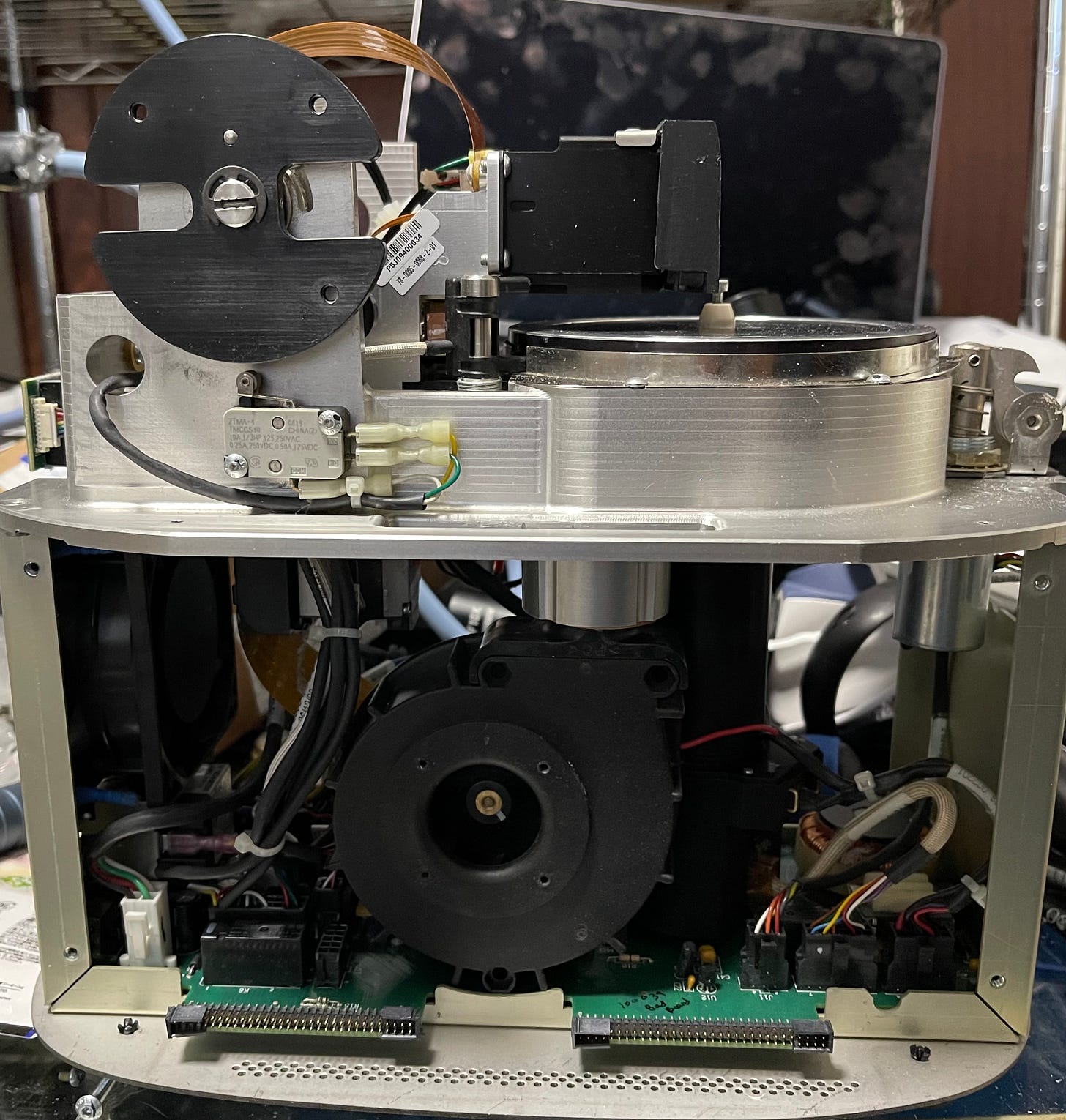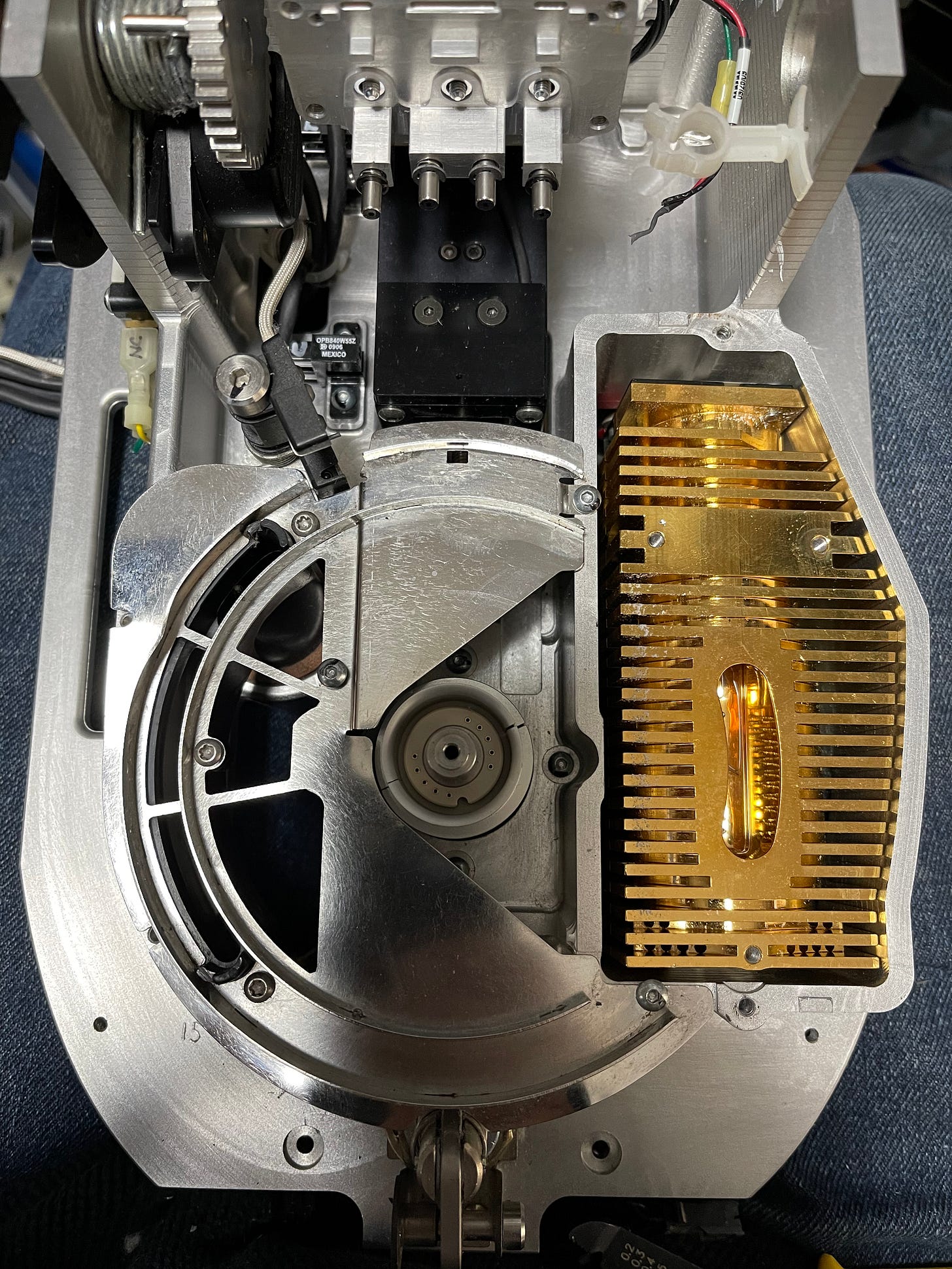3M Integrated Cycler
I’ve unfortunately let this substack sit idle for far too long. I have in fact, about 100 posted queued up of “things” I’ve taken pictures of but so far failed to post.
The problem I think was that I was putting too much time into each post to make the worth the effort for the relatively limited number of subscribers this newsletter has received so far (30).
A recent post on my other substack reminded me that I should at least try and post a few more things here, because if nothing else, it’s fun.
So today, I’m going to post a few pictures on a 3M Integrated Cycler. This is essentially a qPCR machine which uses a special disk as a substrate. For me, qPCR machines that use custom consumables are generally useless. But I was interested in tearing one apart and having a poke around:
Opening the unit you and see the spindle on which the disc would sit. A fancy array of magnetics in both the lower part of the unit and in the lid clamp the disc in place:
If you pull off the chassis you can see that a “read head” is able to move over the disc and line up with where the reaction chambers would be on the sample disc. This read head has 4 optical fibers coming out of it which…
Head out to this Hamamatsu unit, which appears to be a photomultiplier tube. I would imagine there’s only a single tube in this unit so a single sensor is being used to address 4 channels. I was somewhat surprised that a PMT is used rather than a photodiode, but this isn’t atypical. And I imagine at time of manufacture, PMTs were significantly more sensitive than photodiodes:
If we pull apart the “read head” we can find the rest of the optical system. In the image below, the PMT fiber couples in on the bottom right. An LED is used as the emission source (top left) this goes out to a filter (to clean up the emission spread) and I imagine goes straight through the Dichroic mirror without being reflected toward the PMT.
This would then cause the fluorophores in the sample to emit at the different wavelength. Which heads out the the dichroic which is reflective at this wavelength and therefore reflects the light though another filter (to remove any unwanted reflections at other wavelengths) and is focused onto the fiber for detection via the PMT:
The unit contains 4 similar modules in the read head, each operating at a different set of frequencies to enable multiplex qPCR.
The electronics driving the analogue system looks fancy but is most likely nothing particularly special. See how many PICs you can count:
Elsewhere in the read head you can find this USB camera module, not having a sample disc I’m not exactly sure what it was designed to read, but most likely a barcode, QR code or data matrix identifying the batch and potentially disc type being used:
A side few of the unit shows the cooling fan on the left. This is one part of a two part thermal system used to do thermal cycling in this unit, this of course cooling the disc down to (near) room temperature:
The second part is the heating element shown on the right in the picture below. I’ve pulled this element out and it makes a nice little hand warmer :). There might be another post on it at some point.
But essentially my understanding is that the unit can cycle samples between hot and cold by rotating the disc cover these two elements. This enables PCR where you need to heat (to melt the double stranded DNA) before cooling things down for another amplification cycle.
This is pretty neat, because by simply rotating the sample disc you can perform both the thermal cycling and position samples to be read out by a single sensor. A very different approach (with it’s own limitation of course) to that used in the Cepheid instrument where they just duplicate the whole system, once for each sample.
The advantage for Cepheid of course, is that samples can be added to the system asynchronously as they become available. This is likely a much better fit for a hospital environment where you want to process samples as soon as you can, rather than batching them up.
Anyway, that’s it! That’s the post! I’ll make an effort to keep these slightly more regular but no promises!
Images and text CC-by-SA.
